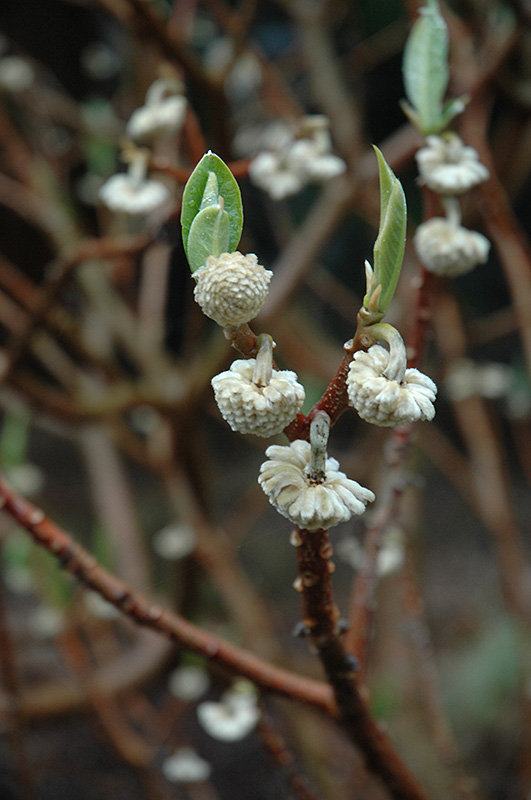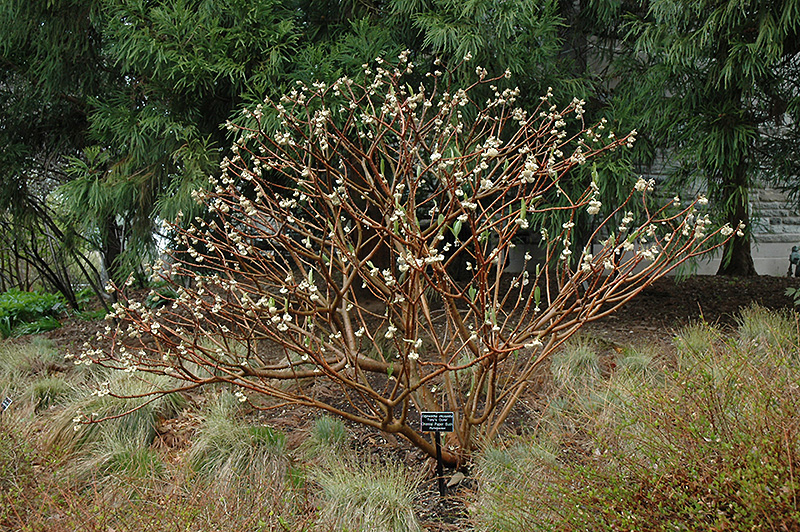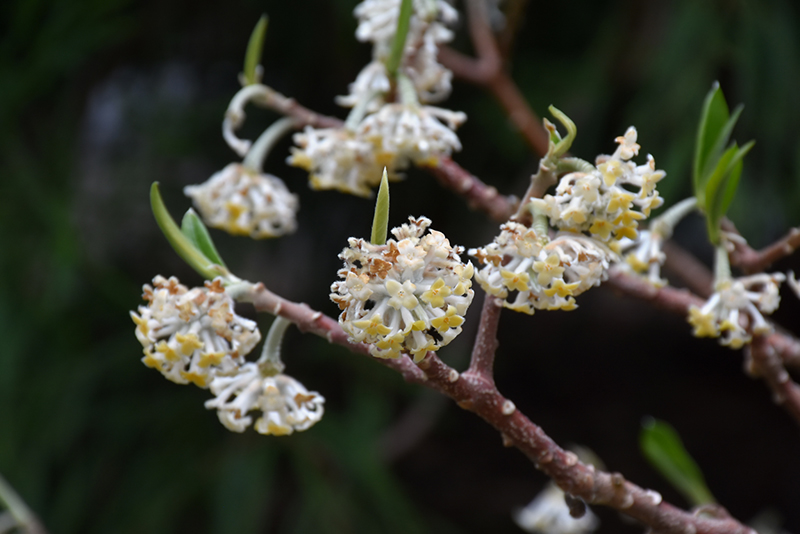Plant Finder
Snow Cream Oriental Paper Bush
Edgeworthia chrysantha 'Snow Cream'
Height: 8 feet
Spread: 8 feet
Sunlight:
![]()
![]()
Hardiness Zone: 6b
Other Names: Mitsumata Paper Plant
Description:
The foliage on this variety is attractive, but it is primarily grown for its flowers; blooms are fragrant and open in late winter; golden-yellow and white trumpets that are almost tubular, in dense clusters create an exotic look as a garden accent
Ornamental Features
Snow Cream Oriental Paper Bush has masses of beautiful clusters of fragrant white trumpet-shaped flowers with gold throats at the ends of the branches in late winter before the leaves, which are most effective when planted in groupings. It has attractive dark green deciduous foliage. The narrow leaves are highly ornamental but do not develop any appreciable fall color. The brown bark and brick red branches add an interesting dimension to the landscape.
Landscape Attributes
Snow Cream Oriental Paper Bush is a multi-stemmed deciduous shrub with a mounded form. Its average texture blends into the landscape, but can be balanced by one or two finer or coarser trees or shrubs for an effective composition.
This is a relatively low maintenance shrub, and should only be pruned after flowering to avoid removing any of the current season's flowers. Gardeners should be aware of the following characteristic(s) that may warrant special consideration;
- Suckering
Snow Cream Oriental Paper Bush is recommended for the following landscape applications;
- Accent
- Mass Planting
- General Garden Use
Planting & Growing
Snow Cream Oriental Paper Bush will grow to be about 8 feet tall at maturity, with a spread of 8 feet. It has a low canopy, and is suitable for planting under power lines. It grows at a medium rate, and under ideal conditions can be expected to live for 50 years or more.
This shrub does best in full sun to partial shade. It prefers to grow in average to moist conditions, and shouldn't be allowed to dry out. It is not particular as to soil pH, but grows best in rich soils. It is somewhat tolerant of urban pollution. This is a selected variety of a species not originally from North America.






